Welcome, fellow dragon fruit enthusiasts! Embark on a journey through the seasons as we unravel the secrets of successfully managing your dragon fruit orchard month by month. This comprehensive guide delve into the intricate operations required to nurture these mesmerizing fruits throughout the year. From the delicate care needed during the frosty embrace of winter to the vibrant blossoms of spring and the sun-drenched harvests of summer, we’ll leave no stone unturned.
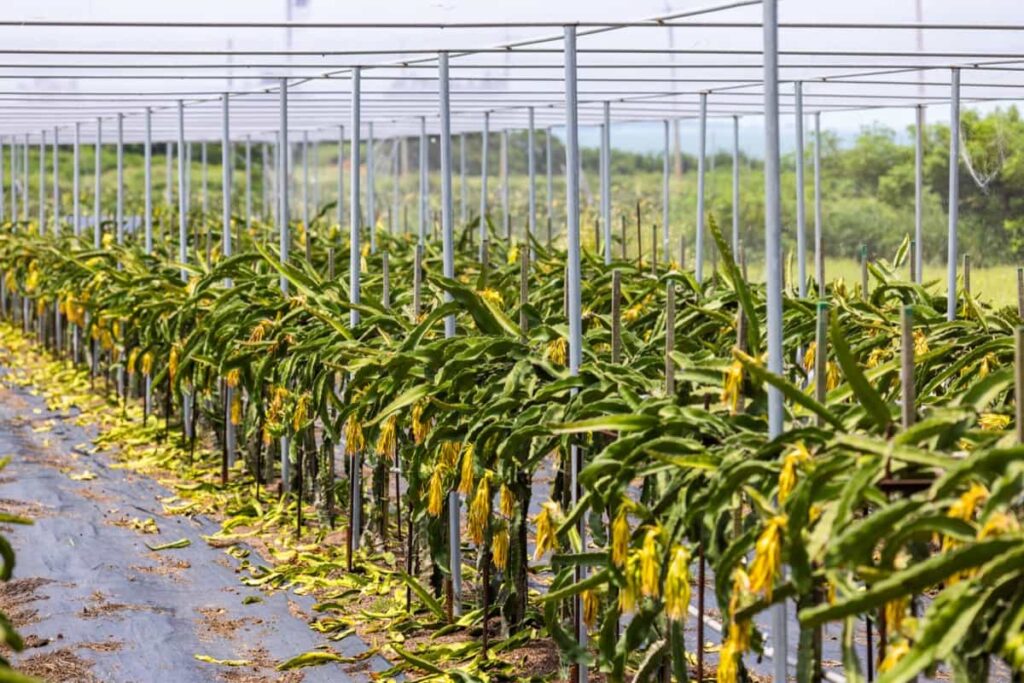
Dragon Fruit Orchard Management
What is Dragon Fruit Farming and its Overview?
Dragon fruit farming, also known as Red Pitaya cultivation, has gained significant attention among Indian growers due to its vibrant color, economic value, and high nutritional content. Native to Southern Mexico, Guatemala, and Costa Rica, dragon fruit was introduced to India in the late ’90s, and its cultivation is gradually expanding.
Currently, regions like Karnataka, Kerala, Tamil Nadu, Maharashtra, Gujarat, Orissa, West Bengal, Andhra Pradesh, and the Andaman & Nicobar Islands are actively involved in dragon fruit farming, with an estimated total cultivation area of less than 400 hectares. While most dragon fruits in Indian markets are imported from countries like Vietnam, Thailand, Malaysia, and Sri Lanka, there has been a growing interest in domestic production.
Dragon fruit cultivation thrives in dry and frost-free agro-climatic regions of Southern, Western, and North Eastern India. Due to its heavy demand in domestic and international markets, dragon fruit farming presents a lucrative opportunity for backyard growers and medium and large-scale plantations. Dragon fruit plants are fast-growing perennials, with economic production possible within the year’s first season after planting and full production within three to five years.
The fruit is a nutritional powerhouse, rich in antioxidants, vitamins, minerals, and dietary fibers. It has benefits, including weight loss, diabetes control, and cholesterol reduction. Dragon fruit comes in two main types: white-pulped and red/pink-pulped, with the latter containing higher levels of phenolics, flavonoids, and antioxidant activity. With its hardy nature and adaptability to different climatic and soil conditions, dragon fruit farming holds great promise for farmers in India.
The fruit’s biochemical composition, including organic acids, soluble solids, and vitamin C, contributes to its flavor, sweetness, and overall consumer acceptance. The presence of phenolic compounds and flavonoids in dragon fruit adds to its antioxidant and health-promoting properties, making it a sought-after functional food.
As the dragon fruit industry continues flourishing, more farmers embrace this crop, sharing success stories from different regions. Nurserymen also actively propagate dragon fruit planting material, supporting the industry’s growth. With its unique appeal, economic viability, and nutrient richness, dragon fruit farming is set to flourish in India’s agricultural landscape.
Best Tips for Growing Dragon Fruit Orchard Operations Practices
Dragon fruit, with its vibrant colors and exotic taste, has gained popularity among fruit enthusiasts and farmers alike. Here are the best valuable tips for your dragon fruit farming journey.
In case you missed it: Optimizing Indian Jujube/Ber Orchard Management: A Month-By-Month Operations Guide for Maximum Yield
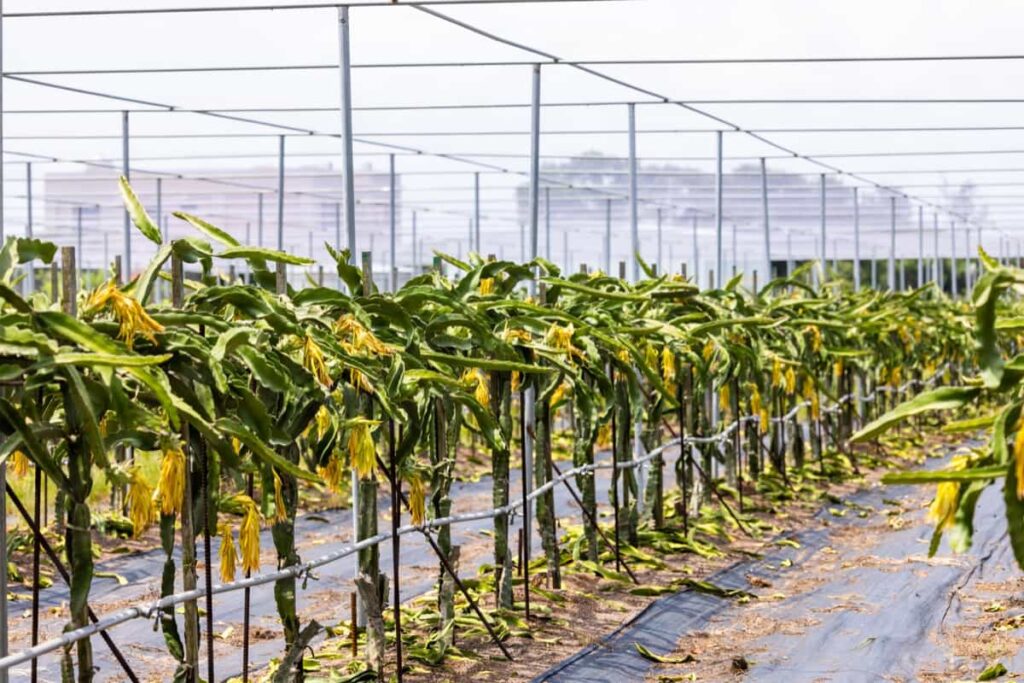
Climate Requirements
Dragon fruit thrives in tropical climates with 40-60 cm annual rainfall. The ideal temperature range for best growth is between 20°C and 30°C. However, excessive sunlight can harm plants, so providing adequate shading in high-sunlight areas is crucial.
Soil Preparation
While dragon fruit can adapt to various soil types, sandy soils with good organic matter and proper drainage are preferred. Aim for a pH between 5.5 and 7 to ensure optimal crop development. Plough the field thoroughly, achieving a fine tilth and eliminating weeds. Incorporate organic compost into the soil before planting.
Propagation
Dragon fruit plants can be propagated through stem cuttings, with 20-25cm long cuttings commonly used for planting. These cuttings should be prepared a day or two before planting, allowing the latex to dry. Taking the cuttings from elite mother plants after the fruiting season is recommended.
To prevent diseases, the cuttings should be treated with fungicides. Plant the cuttings in 12 x 30 cm polyethylene bags filled with soil, farmyard manure, and sand in equal proportions. Keep the bags in a shady area for rooting, ensuring that excess moisture is avoided to prevent rotting. After 5-6 months, the cuttings will root and become ready for planting.
Plantation Method
Propagation through cuttings is the most common and recommended method for dragon fruit farming. Cuttings from quality mother plants should be around 20 cm in length. Allow the cuttings to dry in the shade for a few days before planting them. Maintain a plant-to-plant distance of 2 meters x 2 meters, digging pits measuring 60 cm x 60 cm x 60 cm and filling them with topsoil, manure, and superphosphate.
Plant Support and Training
To promote proper plant growth and easy management, provide support using concrete or wooden columns. Tie the young plants to these columns and consider using a round or circular metal frame to maintain the shape of the dragon shrub. In a single post system, the planting distance is typically 3×3 meters. Use vertical poles that are 1.5 to 2 meters high, allowing the plants to branch and hang down.
In case you missed it: Optimizing Date Palm Orchard Management: A Month-by-Month Operations Guide for Maximum Yield
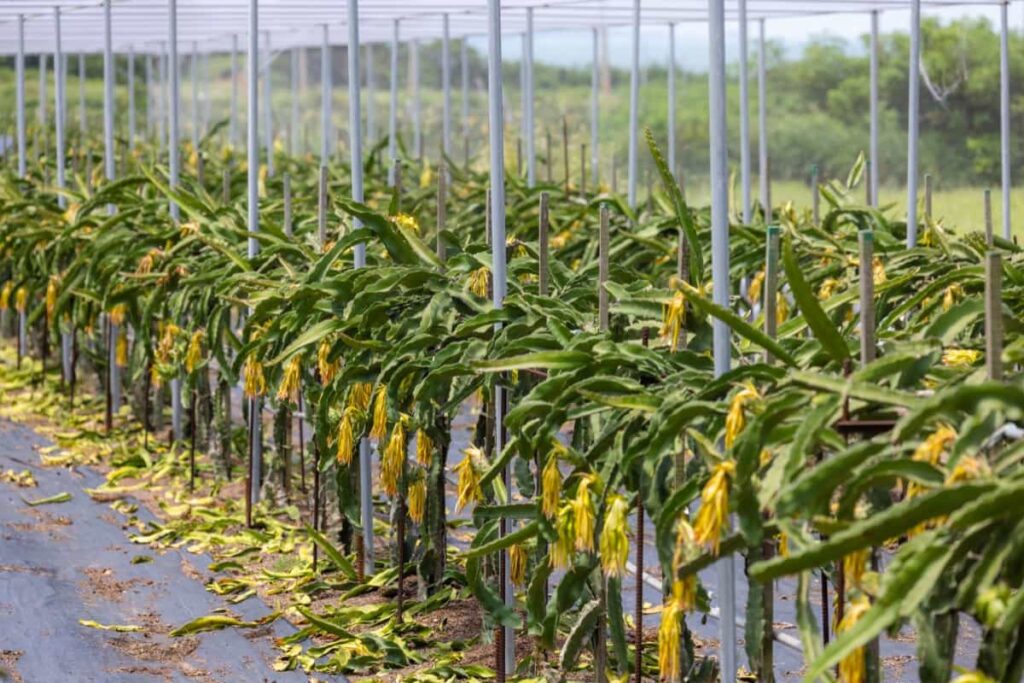
The dragon fruit plants can be planted near the poles to facilitate climbing. The number of plants per pole may vary depending on the climatic conditions, with 2 to 4 plants being common. Limit lateral shoots and allow 2-3 main stems to grow, regularly removing lateral shoots. Using round metal or concrete frames is important to maintain a balanced shrub and distribute the hanging shoots evenly. Adding dolomite and organic fertilizer at planting benefits the plants’ growth.
Fertilization
Organic manure is essential for the growth and development of dragon fruit plants. Each plant should have a minimum of 10 to 16 kg of organic compost, increasing by 2 kg annually. Inorganic fertilizers are also necessary for vegetative growth, with a recommended ratio of muriate of potash:superphosphate: Urea = 40:90:70 grams per plant. Adjust the fertilization ratio during the fruit-bearing stage, giving more potash and less nitrogen.
Irrigation
Dragon fruit requires less water compared to other crops. Irrigate the plants frequently during the planting, flowering, and fruit development stages, particularly in hot and dry climates. Drip irrigation systems can be highly efficient for water management.
Pest and Disease Management
One of the remarkable advantages of dragon fruit farming is its resistance to pests and diseases. As a result, chemical treatments are generally unnecessary, reducing the overall cultivation costs.
Harvesting
Dragon fruit takes approximately 27-30 days to mature fully. Harvesting the fruits as soon as they are fully grown is crucial to avoid rotting. The ideal time for harvesting is typically 3 to 4 days after the fruits change color. For export purposes, harvest them within one day of color change. You can expect a production yield of 5 to 6 tonnes per acre.
In case you missed it: Optimizing Papaya Orchard Management: A Month-by-Month Operations Guide for Maximum Yield
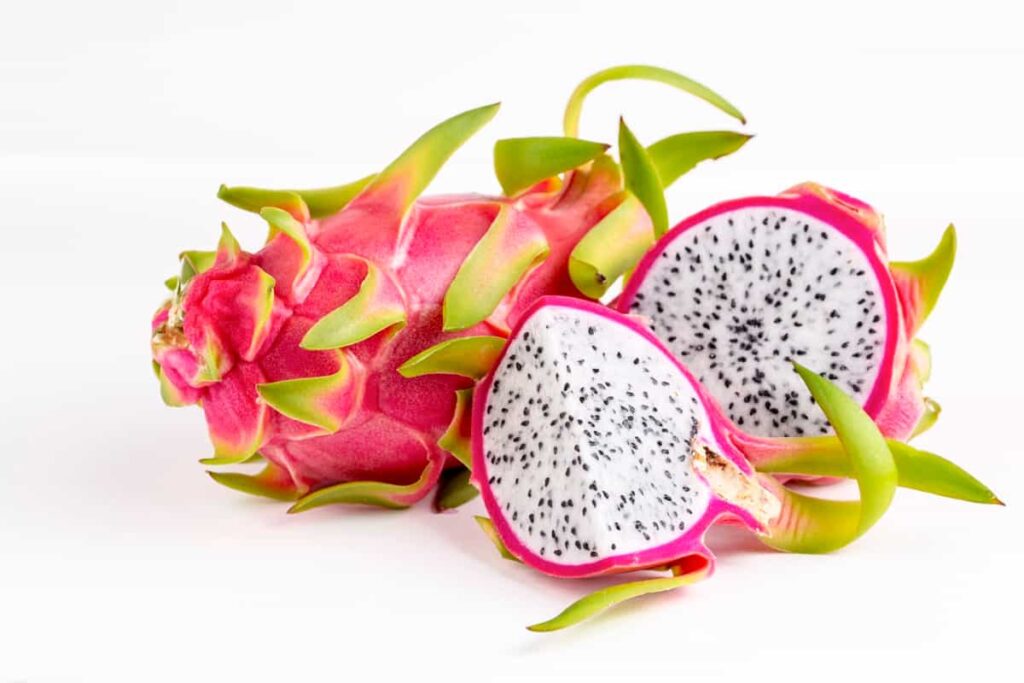
January Month Dragon Fruit Orchard Operations Planning
- Prune the vines to remove any dead or diseased branches.
- Inspect the trellis system and repair any damaged or weak structures.
- Apply a balanced fertilizer to provide essential nutrients to the plants.
- Monitor irrigation to ensure the plants receive adequate water during dry periods.
- Continue training the vines to grow along the trellis system.
- Maintain weed control by removing weeds that may compete with the dragon fruit plants for nutrients.
- Conduct soil tests to assess the nutrient levels and pH of the soil.
- Plan for upcoming activities such as planting new cuttings or transplanting seedlings.
February Month Dragon Fruit Orchard Operations Planning
- Begin planting new stem cuttings in polyethylene bags filled with a suitable growing medium.
- Ensure that the cuttings are treated with fungicides to prevent diseases.
- Monitor the rooting progress of the newly planted cuttings.
- Continue regular pruning to shape the vines and encourage lateral branching.
- Apply organic fertilizers to promote healthy growth and flowering.
- Implement a trellis support system to provide stability for the growing vines.
March Month Dragon Fruit Orchard Operations Planning
- Inspect for pests and diseases, and implement appropriate pest management strategies.
- Conduct regular weed control to minimize competition for nutrients.
- Prune any damaged or diseased branches to maintain plant health.
- Prepare for the upcoming flowering season by ensuring optimal growing conditions.
- Plan for potential pollination activities, such as introducing pollinators or hand-pollinating the flowers.
April Month Dragon Fruit Orchard Operations Planning
- Apply fertilizers to support flowering and fruit development.
- Evaluate soil suitability by digging a profile pit and avoiding soils with calcareous nodules or sheetrock.
- Avoid waterlogged or poorly drained soils and black cotton (BC) soils.
- Collect soil samples at every one-foot depth from suitable lands for analysis.
- Ensure soil pH is between 7.0 and 8.0 for optimal mango plantation. Avoid pH below 6.0 or above 8.5.
- Avoid soils and irrigation water with high electrical conductivity (EC) above 1.0 dsm and exchangeable sodium above 15%.
- Harvest any ripe dragon fruits and plan for post-harvest handling and marketing.
In case you missed it: How to Start Dragon Fruit Farming/Pitaya in Thailand: A Step-by-Step Guide for Beginners
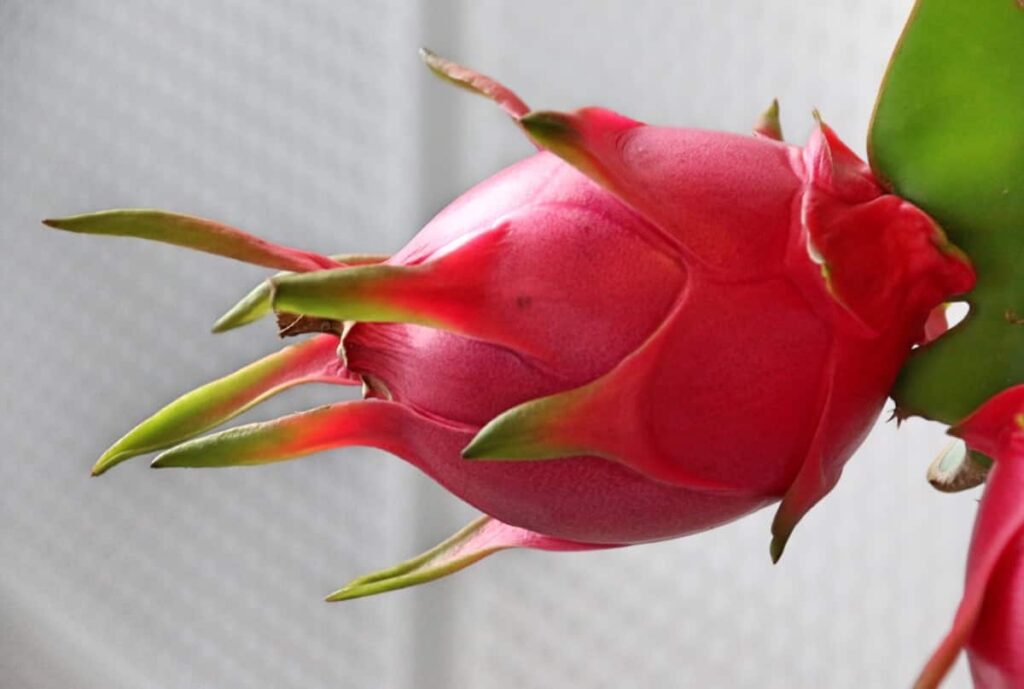
May Month Dragon Fruit Orchard Operations Planning
- Conduct summer plowing with an MB plow twice and level the land.
- Align and mark pegs for pit digging, maintaining a spacing of 7.5 meters between rows and plants for high-density plantations and 9 meters for normal plantations. The pit size should be 90x90x90 cm.
- Take precautions while pit digging, placing the top soil (1 ½ ft.) to the right side of the pit and the bottom soil (1 ½ ft.) to the left side. Expose the pits to sunlight for at least two weeks before filling them to control soil-borne pests and diseases.
- Arrange for procurement of plant material from reliable nurseries, preferably from government nurseries or nurseries recommended by the Department of Horticulture.
June Month Dragon Fruit Orchard Operations Planning
- Fill the pits with a mixture of topsoil and 50 kgs of Farm Yard Manure (FYM), 1 kg of Single Super Phosphate, 1 kg of Neem Cake, and 100 gm of 10% Follidol dust per pit.
- Ensure that the pits are filled with soil at least 15cm above the ground level, allowing settling to reach ground level at planting.
- Install thorn fencing or a thick-growing live fence to control cattle trespassing.
- Mark out and complete trench cutting for drip irrigation installation.
- Take advantage of the onset of monsoon to sow intercrops example, Mulberry, coffee, cocoa, yams, sweet potatoes, taro, and okra.
July Month Dragon Fruit Orchard Operations Planning
For dragon fruit orchard operations planning in July, it is important to keep the saplings near a water source and ensure regular watering until planting is completed. If there is a delay in receiving sufficient rainfall, the pits should be soaked through irrigation or the drip system. When planting the saplings, care should be taken not to disturb the root system, and the graft union should be positioned 6 inches above the ground level.
Staking the plants with strong support sticks, treated with black tar at the bottom to prevent termite attacks, is necessary. Immediate watering after planting is essential. During the first month, irrigation should be done every 4 to 5 days and later, at intervals of 8 to 10 days if there are no rains within the initial two years.
August Month Dragon Fruit Orchard Operations Planning
- Protect new growth from the caterpillar or beetle attacks by spraying Quinolphos or Endosulphon every 15 to 20 days.
- Weed once a month during the monsoon season and create basins around plants to retain water.
- Mulch basins with paddy husk or straw to prevent evapotranspiration and control weeds.
- Control leaf spot diseases by spraying Copper Oxy Chloride to prevent twig drying and plant death.
September Month Dragon Fruit Orchard Operations Planning
- If there are micronutrient deficiencies, spray Multiplex mixed with water at a 5 gm/liter ratio along with any pesticide.
- Remove affected leaves with leaf galls on new flushes and spray Phosphomidon at a 1.5 ml/liter of water ratio.
- Apply the first top dressing of fertilizers for each pit, including 50 gm of Urea, 125 gm of Single Super Phosphate, and 40 gm of Murate of Potash. Ensure the fertilizers are applied at least 6 inches from the plant and irrigate the pits immediately after application.
In case you missed it: Optimizing Coconut Orchard Operations: A Comprehensive Management Guide for Month-wise Planning
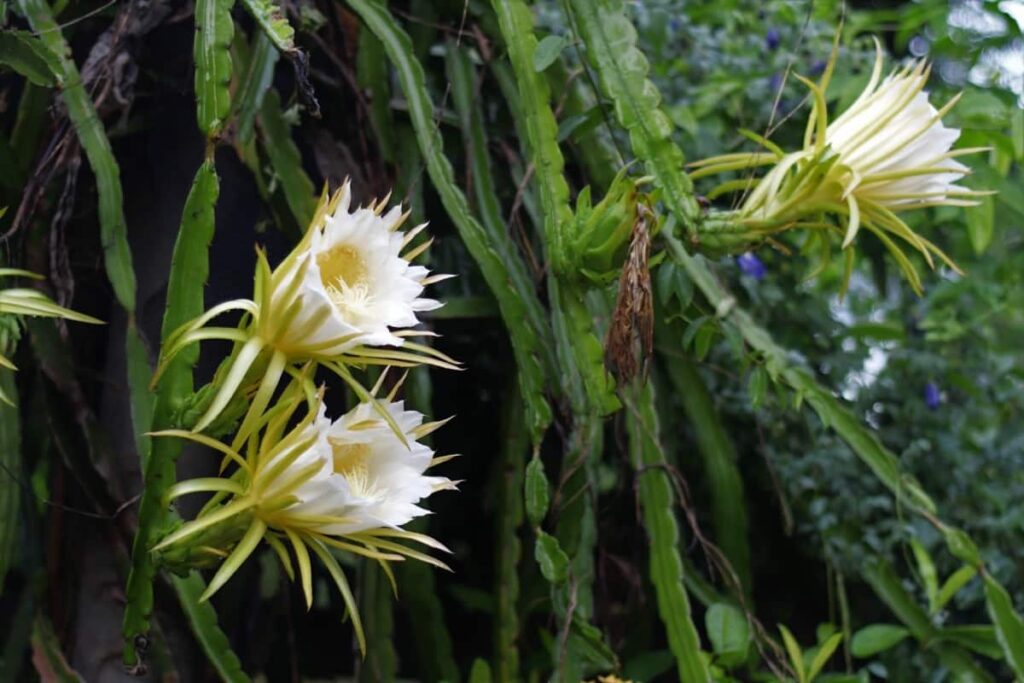
October Month Dragon Fruit Orchard Operations Planning
- Conducting gap filling by replacing any dead plants, ensuring a complete plantation.
- Removing side shoots that emerge from the rootstock to maintain plant vigor.
- Considering planting in high rainfall zones during October-November.
- Sowing intercrops for the Rabi season if intercropping was not done in June-July.
November Month Dragon Fruit Orchard Operations Planning
- Continue regular irrigation and maintenance of plants.
- Monitor for pests and diseases, and apply appropriate treatments if necessary.
- Prune the plants to remove dead or diseased branches.
- Harvest ripe fruits.
- Collect data on the yield and quality of the harvested fruits for future planning and analysis.
December Month Dragon Fruit Orchard Operations Planning
- Removing flower buds as they appear to promote plant growth.
- Spraying Wettable Sulphur and phosphomidon to control Powdery Mildew diseases and leaf hoppers.
- Applying the second round of top dressing fertilizers, including Urea, Single Super Phosphate, and Murate of Potash.
- Ensure fertilizers are applied at least 6 inches away from the plant and irrigate the pits immediately after application.
Conclusion
“Mastering the Seasons: A Guide to Month-wise Operations for Dragon Fruit Orchards” provides a comprehensive outline of tasks to be undertaken throughout the year. From soil preparation and planting to pest control and fertilization, this guide assists orchard owners in optimizing their dragon fruit cultivation for successful outcomes.
- Profitable Village Farming Business Ideas in 2024
- High-Yield Aquaculture: Fast-Growing Fish for Farming
- Effective Fish Pond Construction Techniques for Beginners
- Irrigation and Water Management in Pineapple Farming
- Blossom to Harvest: Mastering Flowering and Pollination in Papaya Farming
- Pig Fattening Essentials: From Selection to Sale for Beginners
- Raising Wagyu Cattle: A Complete Guide for Premium Beef Production
- Soil Types and Their Water Holding Capacity
- Optimizing Irrigation Schedules for Coconut Groves for Enhanced Yield
- Espresso Your Garden: Coffee Grounds for Healthier Acid-Loving Plants
- The Best Soil Mix for Snake Plants: How to Mix Your Own Snake Plant Soil
- Green Thumb Success: Expert Tips for Cultivating Greenhouse Beans All Year Round
- Bloom All Year Round: The Ultimate Guide to Indoor Hyacinth Care
- Eco-Friendly Gardening: How to Make Liquid Fertilizer from Kitchen Waste
- Ultimate Guide to Grow Anise in Pots: Explore Seed Propagation to Harvesting
- Guide to Raising Chester White Pigs: Discover Breed Facts to Growth Management
- Mastering the Elegance: The Ultimate Guide to Weeping Cherry Tree Care, Planting, and Maintenance
- Ultimate Guide to Planting Garlic in Grow Bags: Growing Strategies for Beginners
- How to Fix Spider Plant Leaf-Related Problems: Natural and Organic Remedies
- 10 Reasons Why Your Tulsi Plant is Shedding Leaves: Home Remedies and Solutions
- Optimizing Growth and Yield: The Advantages of Palm Bunch Ash Fertilizer
- Utilizing Neem Oil Extract as a Natural Pesticide for Hydrangea
- From Soil to Harvest: Various Ways in Which Farmers Can Use AI Tools
- Steps to Encourage and Induce Citrus Flowers: A Comprehensive Guide
- How to Fix Snake Plant Leaf-Related Issues: Natural and Organic Remedies
- Transform Your Garden into a Fragrant Oasis with Raat Ki Rani (Night Blooming Jasmine)
- Discover the Ideal Chicken Breeds for Philippine Farms
- How to Create a Poultry Egg Farm Business Plan for Profits
- Grow Lemon Cucumbers Like a Pro: Insider Techniques for Bountiful Yields
- Ultimate Guide to Caring for Your Pink Princess Philodendron: Tips for Thriving Variegation
- Areca Nut Profit Per Acre: Calculating Yield and Cost of Cultivation
- How Kaveri Chicken is Becoming a More Profitable Breed in Indian Backyards
- Transform Your Barn: 9 Steps to Convert a Horse Stall into a Chicken Coop
- Exploring Suffolk Sheep Disadvantages with Limitations and Challenges
- Guide to Solving Potted Lemon Tree Problems: How to Revive Lemon Tree in Containers
- Steps to Encourage Female Pumpkin Flowers: Best Strategies for More Flowers and High Yields
